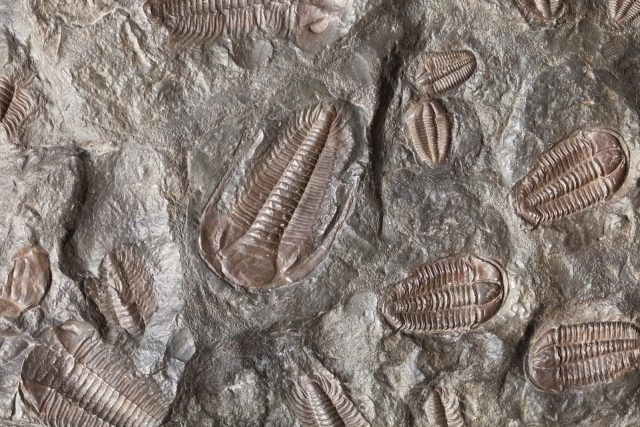Fossils are the remains of ancient organisms preserved in rock formations over millions of years. They provide a unique window into the past, allowing us to learn about the history of life on Earth and the evolution of different species. Fossil hunting can be an exciting and rewarding way to explore the world of science and gain a deeper understanding of our planet’s history.
In this beginner’s guide to fossil hunting, we’ll explore the basics of what fossils are, where to find them, and how to identify them. We’ll also discuss the tools and techniques you’ll need to get started and some important safety considerations. Whether you’re a budding paleontologist or just looking for a fun outdoor activity, this guide will provide you with everything you need to know to start exploring the fascinating world of fossils. So grab your gear, and let’s get digging!
Why Fossil Hunting?
Fossil hunting has captured the imagination of people for centuries. It’s an activity that can be enjoyed by people of all ages and for many different reasons. Here are some of the top reasons why fossil hunting is such a popular pastime:
- Learning about the past: Fossils provide us with a glimpse into the history of life on Earth. By studying them, we can learn about the evolution of different species, how they adapted to changing environments, and even how mass extinctions occurred.
- Connecting with nature: Fossil hunting is a great way to get outdoors and explore the natural world. It can take you to some stunning locations and give you a sense of connection with the environment.
- Hands-on learning: Fossil hunting is a great way to get hands-on experience with science. It can help people better understand geology, biology, and paleontology.
- Personal satisfaction: There’s something incredibly rewarding about finding a fossil. It’s a tangible piece of history you can hold and cherish for years to come.
- Cultural significance: Fossils have played an important role in human culture for thousands of years. They have been used in artwork, religious ceremonies, and even as medicinal remedies.
Overall, fossil hunting is a fun and exciting activity offering a unique perspective on the world. Whether you’re a seasoned collector or a beginner, there’s always something new to learn and discover. So why not give it a try and see what treasures you can uncover?
Preparing for a Fossil Hunt
Preparing for a fossil hunt is an important step in ensuring that you have a safe and successful experience. Here are some key things to consider before heading out on your fossil-hunting adventure:
- Location: Research the location where you plan to hunt for fossils. Find out what types of fossils can be found there, what the terrain is like, and what the weather conditions will likely be. This information will help you determine what equipment you’ll need and what clothing to wear.
- Equipment: You’ll need some basic equipment for fossil hunting, such as a rock hammer, chisel, and safety goggles. You may also want to bring a field guide to help you identify fossils, a camera to document your finds, and a backpack to carry your gear.
- Clothing: Wear comfortable, weather-appropriate clothing that can handle getting dirty or wet. Long pants and sleeves can help protect your skin from scratches and bug bites. Sturdy shoes with good traction are also important, as you may be walking on uneven terrain.
- Safety: Always put safety first when fossil hunting. Make sure someone knows where you are going and when you plan to return. Stay aware of your surroundings and watch for hazards such as steep cliffs or loose rocks. And be sure to use caution when using tools such as hammers and chisels.
- Permits: Depending on where you plan to hunt for fossils, you may need a permit or permission from the landowner. Check with local authorities or the property owner to find out what rules and regulations apply to fossil hunting in the area.
By preparing for your fossil hunt, you can increase your chances of having a safe and successful outing. And who knows? You may just uncover some amazing fossils that will provide a glimpse into the fascinating history of life on Earth.
Identifying Potential Locations
Identifying potential locations is a key step in planning a successful fossil hunt. Here are some tips for finding places where fossils are likely to be found:
- Geologic Maps: Geologic maps are a great resource for identifying areas where rocks of the right age and type are present. Many states have online databases that allow you to search for geologic maps of your area.
- Local Museums and Universities: Local museums and universities often have collections of fossils and may have information on where to find fossils in the area. They may also offer guided tours or field trips to fossil-rich locations.
- Online Resources: Many online resources are available to help you identify potential fossil locations. Websites such as FossilEra and The Fossil Forum have forums where people share information about fossil locations and tips for hunting.
- National Parks and Public Lands: Many national parks and other public lands are known for their fossil deposits and may have designated fossil collecting areas. Check with the park or land management agency for information on collecting permits and regulations.
- Local Fossil Clubs: Fossil clubs are a great resource for connecting with other fossil enthusiasts in your area. They may have information on local fossil locations and may even organize group fossil hunts.
Remember, it’s important to always follow local regulations and guidelines when hunting fossils. Some areas may have restrictions on collecting or require permits. You can have a successful and enjoyable fossil-hunting experience by researching and respecting the environment.
Gear and Tools Needed
Fossil hunting requires some basic gear and tools to help you find and extract fossils safely and effectively. Here are some essential items to consider bringing on your fossil-hunting adventure:
- Rock Hammer: A rock hammer is essential for breaking apart rocks to search for fossils. Choosing a hammer with a pointed tip for chiseling and a flat end for striking is important.
- Chisels: Chisels come in different shapes and sizes and can be used to extract fossils from rock. A variety of chisels can be helpful for working with different types of rock and fossil preservation.
- Safety Gear: Safety goggles and gloves are important for protecting your eyes and hands from rock fragments and other hazards.
- Field Guide: A field guide to fossils can help you identify different types of fossils and learn about the geology and paleontology of the area.
- Backpack: A backpack is useful for carrying your gear, water, and snacks while fossil hunting.
- Camera: A camera can be used to document your fossil finds and help with identification later on.
- Whisk Brush: A soft-bristled brush can be used to gently clean dirt and debris from fossils without damaging them.
- Containers: Plastic bags or small containers can safely transport your fossil finds.
- Sturdy Shoes: Sturdy shoes with good traction are important for walking on uneven terrain and climbing over rocks.
Choosing high-quality gear and tools that will last and perform well in the field is important. Investing in quality equipment can help ensure a successful and enjoyable fossil hunting experience.
Collecting and Documenting Finds
Collecting and documenting your fossil finds is an important part of the fossil-hunting process. Here are some tips for collecting and documenting your discoveries:
- Take Photos: Take clear photos of your finds in situ (in the rock or sediment where they were found) and after removal. This will help you document the context in which they were found and make it easier to identify them later.
- Record Location: Record the location of your finds, including GPS coordinates if possible. This will help you track where different types of fossils were found and can be useful for future trips.
- Label Finds: Label each fossil with a unique identifier, such as a number or letter, and record this identifier in a notebook or on a data sheet. This will help you keep track of each fossil and its location.
- Use Proper Techniques: When removing fossils from the rock or sediment, use proper techniques. Avoid using excessive force or damaging the fossil in the process. If you’re unsure how to safely remove a fossil, consider seeking guidance from an experienced fossil hunter or a paleontologist.
- Preserve Finds: Once you’ve collected your fossils, storing them properly is important to avoid damage or deterioration. Wrap them in tissue paper or bubble wrap and place them in a container or box for safe transport.
- Share Your Finds: Share your finds with others by posting photos and information online or by donating them to a museum or educational institution. This can help others learn about the fossils and contribute to the scientific knowledge of the area.
Remember, fossil hunting can be a fun and rewarding activity, but it’s important always to follow local regulations and guidelines and to respect the environment and the fossils you find. Collecting and documenting your findings carefully can contribute to our understanding of the history of life on Earth.
Conclusion: Exciting Possibilities
In conclusion, fossil hunting is a thrilling and rewarding activity that offers exciting possibilities for discovery and scientific understanding. By preparing properly, identifying potential locations, and using the right gear and techniques, you can increase your chances of finding interesting and valuable fossils. Documenting and sharing your findings can also contribute to our knowledge of the history of life on Earth.
Fossil hunting can be enjoyed by people of all ages and backgrounds, and it’s a great way to explore the natural world and learn about the geology and paleontology of your local area. So grab your gear, plan your trip, and start exploring – you never know what amazing fossils you might discover!






























